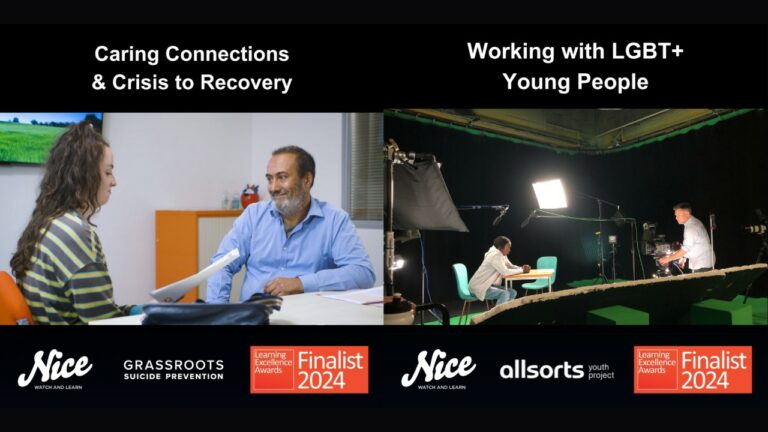Interactive Drama is a powerful and exciting vehicle for learning. New technologies are making it easier to develop, run online and track over LMS. There’s never been a better time to be an interactive drama hero. So why aren’t we being braver?
Drama and interactivity
Drama connects to our defining human characteristics. We are ‘the storytelling ape’ and character-driven narratives are sewn into the fabric of our daily lives. We are also hunter-gatherers and the need to taste, explore and recall is hard-wired to our survival. So when you combine drama with player interactivity, you get a very powerful learning experience. It’s particularly useful for resistant audiences from the ‘I always do it that way’ long-server to the butterfly-brain/ multi-tasking Millennial… and anyone disaffected by page-turning elearning. So what’s really stopping you?
Fear of drama
Not all subjects are appropriate for interactive drama: if it’s too emotional, too edgy it won’t be universal. It may offend. Right?
Think again. Surely any story with people at its heart works for drama. The more conflict, either within or between characters, the better. Stories about managing change, performance, difficult behaviour, diversity and inclusion all work brilliantly as learner-driven drama. The format allows us to put ourselves in the hot-seat, in another’s shoes, and undergo transformation. What could be more universal than characters with real needs, challenges, secrets, blind-spots and triumphs? We embrace that reality, identify with these characters. We want to ‘play’ them, or play against them because difficulty is universal.
Fear of complexity
In interactive drama you need challenging dilemmas. Choices must be clear, but they don’t have to be black-and-white. If you branch carefully and use intelligent scoring/ feedback, you can accommodate many shades of grey. This creates a real-world challenge and also a replay incentive. If you can get a learner wondering ‘What if I go back and choose b) instead…’ you’ve got them fully engaged.
Working with shades of grey will add complexity to your structure. Each decision-point will likely have more than two branching options, so the ‘tree’ will expand correspondingly. But with careful routing and ‘scene recycling’, it is possible to add the grey without adding bulk. There are many ways to make an interactive world look bigger on the inside than it is on the outside.
The danger of ‘simple’ is it becomes simplistic. If you know all the answers, why play the game?
Fear of risk
Which chemistry lesson are you most likely to remember from school? The one where you recited the periodic table, or the one where you put two elements in a test-tube and they went bang? Probably the more dangerous one. That’s why interactive drama is so powerful: it lets you mix it up, try it for yourself, and see the fizz and crackle. That sense of freedom, along with good storytelling, makes the experience compelling. So don’t dull it by setting boundaries that are too safe. If you can’t fail, you can’t win. If there isn’t a consequence there was never really a choice.
Fear of fun
Drama is a playful construct. It echoes the ‘let’s pretend’ of childhood games. But in a corporate context, fun makes us nervous. We worry about demeaning a serious subject, laughing at others or causing offense. Yes, it is very possible to do all of those things and it’s true that cultural or linguistic humour doesn’t globalise well. But playfulness is universal. Consider visual puns, unexpected twists, subversion of pattern, perspective-shifting transpositions, contrary pay-offs, a heightened reality that reflects our own more boldly. These forms of playfulness hurt no-one. They can make a piece memorable, more likely to be revisited and shared. It’s even possible to make a playful interactive drama about bank-fraud, which also meets compliance regulations. Really. All it takes is the courage to stand by your characters and your vision.
Don’t be scared. Be an interactive drama hero
We’ve all been at those kick-off meetings, where concepts are high and words like ‘engagement’, ‘impact’ and ‘immersitivity’ are scrawled across whiteboards. But then the attrition of budgets, timescales, branding, globalisation and collective compromise grind away those great ideas. Eventually the ‘immersitivity’ piece becomes another ordinary piece of video with a few clicks in it. Something your audience must work-through, rather than inhabit.
Let’s not let that happen. Champion the dramatic, complex, risky and playful. And let’s take an interactive hero’s journey together.
Click here to view our interactive drama The Leadership Angel







